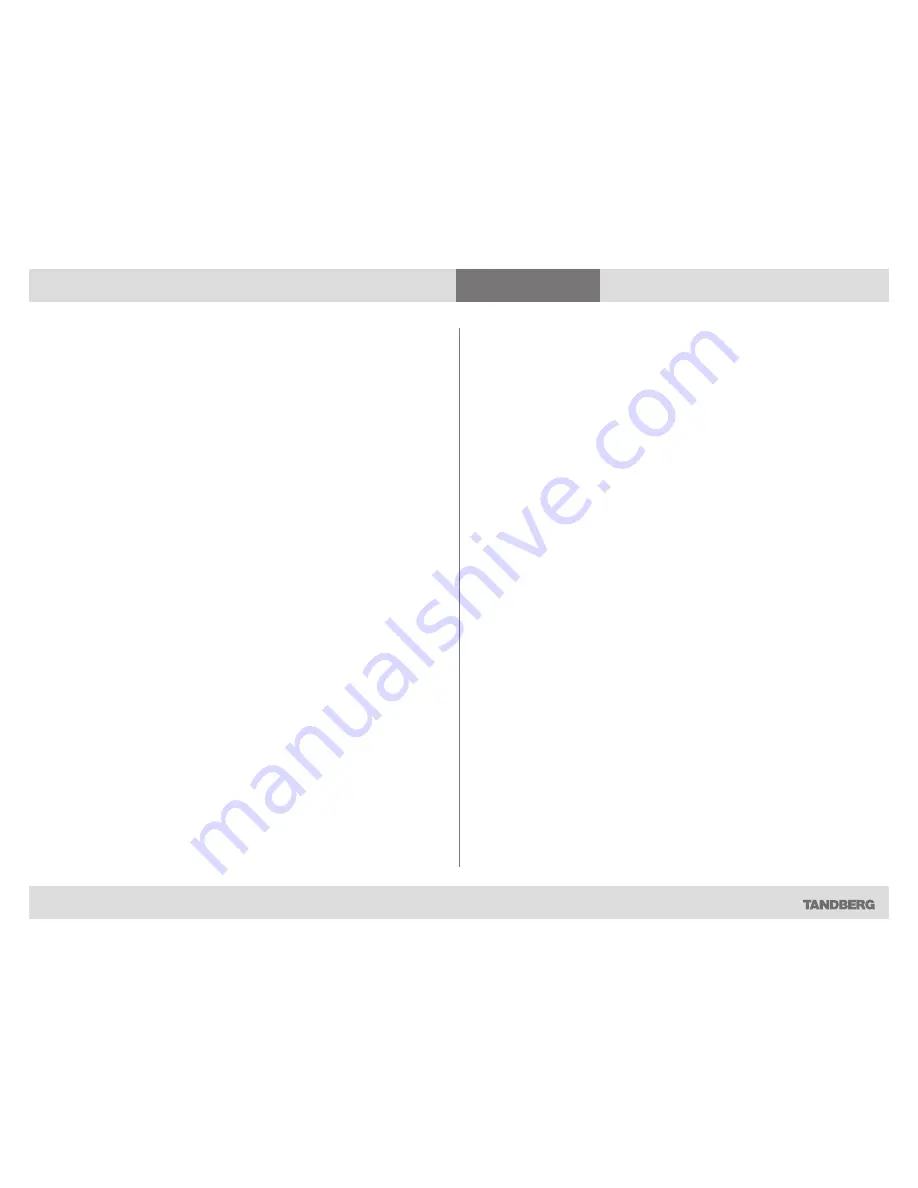
D14330.09 TANDBERG E20 ADMINISTRATOR GUIDE (TE2.1) February 2010
24
What’s in this Guide?
Introduction
Deploying E20
Using E20
The Settings
Advanced settings
Using E20
2.
You may now key in the “number” to which the other party shall be
transferred.
Alternatively you may navigate down to the
Phone book
and search
within this in the usual way, or you may enter
Recent calls
and select
an entry there.
3.
After the “number” has been located, proceed as if you were placing
a call from the phone book in the usual way. The only difference is
that the other party will be connected to the one you just called and
you will be disconnected.
Consultative transfer
You may also combine the two above options. Instead of just transferring
the other party to someone else without consulting the one to receive the
call, you may call this person first and then do the transfer.
Do as follows:
1.
While in a call, press the softkey
H
oLd
.
2.
Press the softkey
n
ew
caLL
and place a new call in the usual way.
3.
Press
t
RanSfeR
. You will now be prompted to decide whether this
new call shall be transferred to the one you have on Hold or as blind
transfer to someone else.
Adding the screensaver of your choice
You may add a screensaver of your choice to the E20. You will need a USB
disk containing the pictures you want to use as screensaver. If the USB
stick contains multiple pictures, the contents will be shown as a gallery,
one picture at a time.
A few things to observe:
•
Once you have plugged in the USB disk, the E20 will produce a dialog
asking you whether the pictures on the USB disk should be displayed by
the USB picture frame. TE 2.1 will read xcif data and even rotate images
when necessary. The prompt will let you specify the time interval
between the last time you operated (used) the E20 and when the
screensaver should start to appear.
•
The USB disk must remain connected to the E20 to make this work.
•
The following file formats are supported:
*.bmp, *.gif, *.ico, *.jpeg, *.jpg, *.mng, *.pbm, *.pgm, *.png, *.ppm,
*.svg, *.tif, *.tiff, *.xbm, *.xpm.
The E20 uses xcif information to scale the picture.
Avoiding conflict with the standby function
There is a standby function in the E20. When activated, the standby
function makes the screen go black after a time interval (delay) specified by
you. This setting will override the screensaver feature.
To continuously display the screensaver, the standby function must be
disabled.
You may, however, combine the two. Consider the following:
Assume that you specify the screensaver to start after 10 minutes and that
you specify the standby to start after one hour. Five minutes after the last
time you used your E20 (or pushed any button), the screensaver will start
and it will then run for 55 minutes until the standby function starts.






























